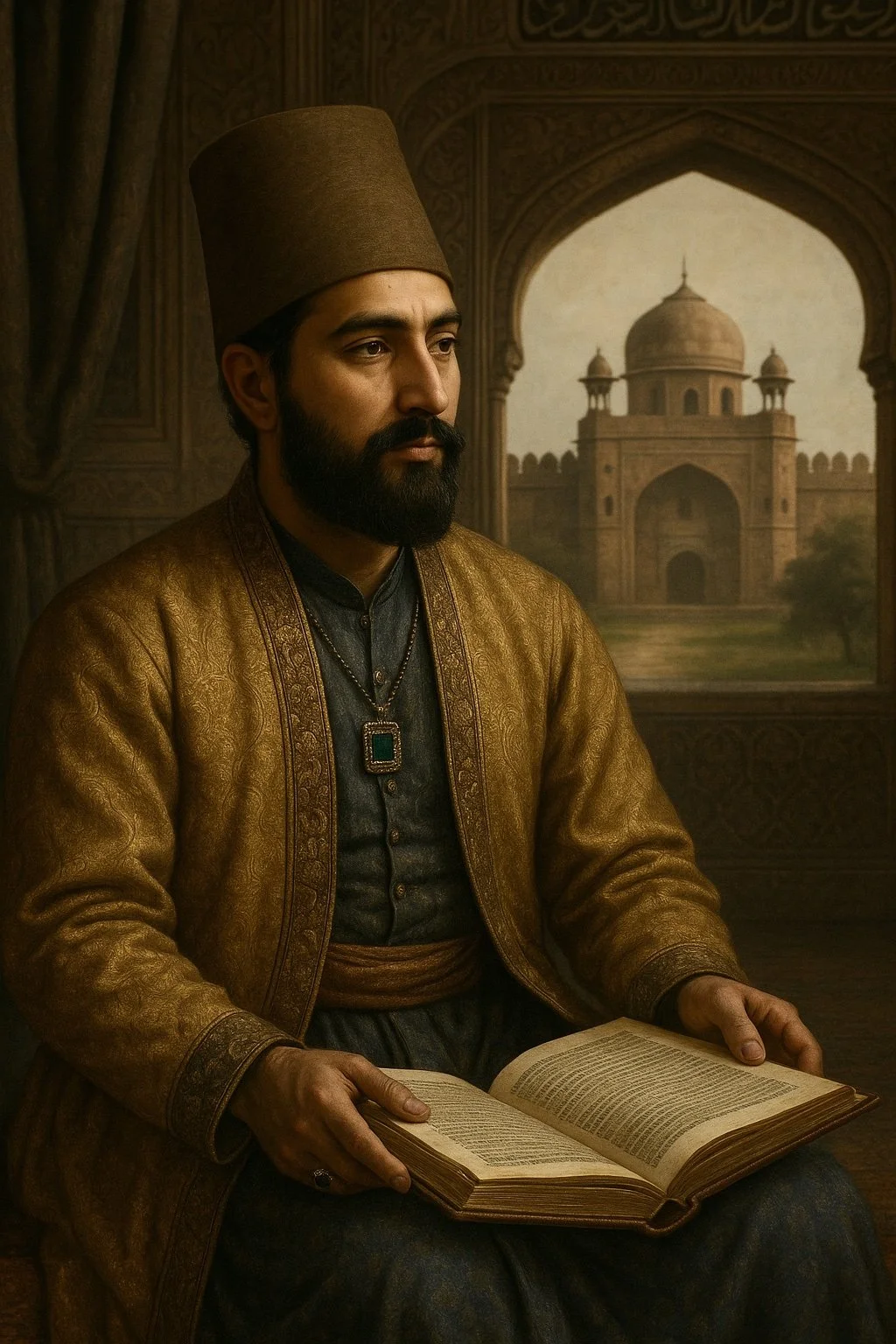HUMAYUN
WHO WAS HUMAYUN?
Humayun , originally named Nasir-ud-Din Muhammad, was the second emperor of the Mughal dynasty. He was the son of Babur, and acceded the throne in 1530. Born on 17 March 1508, Humayun’s reign was marked by significant challenges, from external threats to internal instability. He reigned for 9 years and 4 months (1530 - 1540), until he was exiled, however he did return to power for another 11 months (1555 - 1556) before his untimely death.
EARLY LIFE:
Humayun was born in Kabul and spent his early years accompanying Babur during military campaigns. Born to succeed his father, Humayun gained experience in governance and warfare. However, Babur's sudden death in 1530 left the young emperor with a vast, fragile empire to rule.
Humayun inherited an empire beset by challenges. Local rulers, including the Rajputs and Afghans, sought to reclaim their territories, while his own court was filled with disagreements. Despite these obstacles, Humayun maintained Babur's legacy, though his early decisions revealed a lack of strategic foresight.
HUMAYUN’S STRUGGLES AND EXILE:
Unlike his father, who swiftly consolidated power, Humayun faced immediate threats. The most formidable of these came from Sher Shah Suri - an Afghan leader who defeated Humayun in multiple battles, including the decisive Battle of Kanauj in 1540. This loss forced Humayun into exile, marking a decade-long period of struggle.
During his exile, Humayun sought refuge with the Persian Empire. Shah Tahmasp I of Persia provided him with military support, but in return, Humayun had to adopt Persian customs and culture, which influenced the Mughal court upon his return.
HUMAYUN’S RETURN TO POWER:
In 1555, Humayun reclaimed the Mughal throne with the help of Persian forces. His victory was short-lived; just months after his return, Humayun died in a tragic accident - falling down the stairs of his library.
Despite his brief second reign, Humayun laid the groundwork for the empire's revival under his son, Akbar. His resilience in reclaiming his throne despite years of exile demonstrated his determination, though his leadership continued to face criticism for its inconsistency and reliance on external support.
THE MUGHAL EMPIRE - HUMAYUN’S IMPACT ON PUNJAB:
Punjab once again became a significant battleground during Humayun's reign. After Babur’s death, the region saw instability as local leaders vied for power. Sher Shah Suri’s rise further complicated matters, with Punjab becoming a critical area for his campaigns against the Mughals.
During Humayun’s exile, Sher Shah solidified his control over Punjab, developing infrastructure like the Grand Trunk Road - also known as GT road, an ancient trade route that he modernised by adding milestones, rest houses, and shade-providing trees. This road, which connected Afghanistan to Bangladesh via Punjab, became a vital for trade and cultural exchange across South Asia. These changes influenced the region’s economy and strategic importance.
When Humayun returned to reclaim his throne, Punjab served as a crucial launching point for his campaigns. The broader impact of Humayun’s reign on Punjab was marked by political uncertainty and shifting power dynamics.
THE COMPLEX LEGACY OF HUMAYUN:
Humayun’s legacy is often overshadowed by his father and son, but his reign was pivotal in Mughal history. His resilience during exile and his ability to reclaim the throne demonstrated his determination, but his struggles highlight the fragility of early Mughal rule.
For Punjab, Humayun’s era was one of continued turmoil. The region’s strategic importance made it a focal point for battles and campaigns, leaving its people to endure the effects of constant warfare and changing rulers.
In conclusion, Humayun’s life exemplifies the challenges of early Mughal rule. While his reign was marked by instability, his persistence paved the way for the empire’s consolidation under Akbar. Punjab’s experience during this period reflects the broader struggles of a region caught between competing empires and rulers, setting the stage for its continued resistance and resilience.
A depiction of Emperor Humayun in the early mughal court.
To Humayun’s resilience in the face of adversity, and to the unwavering strength of Punjab through turbulent times. With respect - TrishSaab